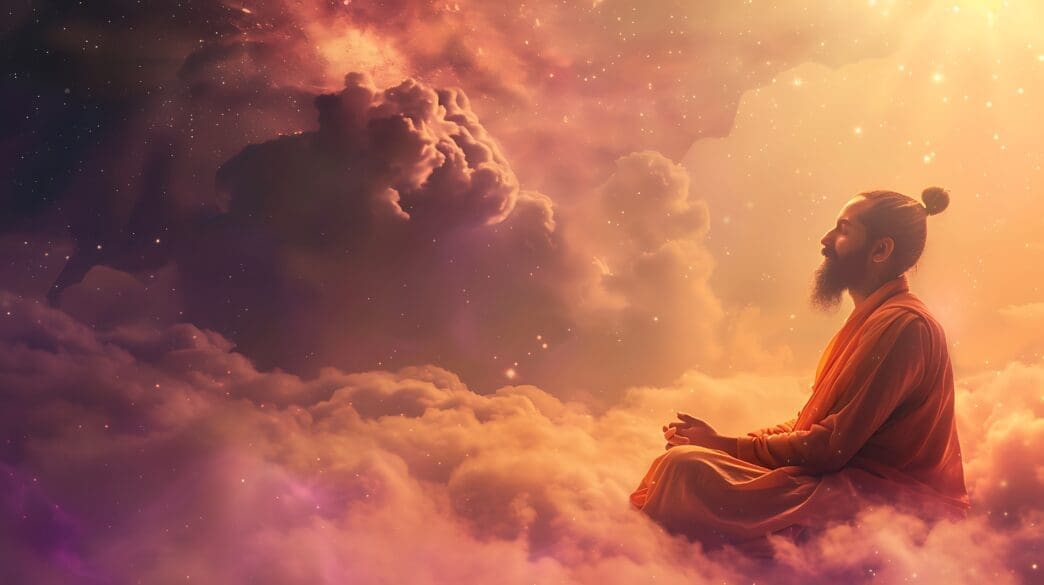At the very heart of Vedic Astrology, or Jyotish, lies the profound and interconnected principles of Karma and Reincarnation. These concepts provide the foundational “why” behind the planetary placements in an individual’s birth chart, transforming astrology from a simple predictive tool into a divine science of self-realization. For the soul, or Atman, journeying through the cosmic cycle of birth and death (Samsara), the horoscope serves as a karmic blueprint, revealing the accumulated actions, desires, and lessons from past lives that shape our present reality and guide our spiritual evolution toward ultimate liberation, or Moksha.
Understanding Karma: The Cosmic Law of Action and Consequence
The word “Karma” is often oversimplified in the West as a cosmic boomerang of “what goes around, comes around.” In Vedic thought, its meaning is far more nuanced and profound. Karma literally translates to “action,” and it encompasses not just physical acts but also our thoughts, intentions, and words.
Every action we perform creates an energetic imprint, a subtle vibration that will eventually return to us as a corresponding experience. This isn’t a system of reward and punishment from an external deity, but rather an impersonal, universal law of cause and effect, as fundamental as gravity. The purpose of this law is not to judge but to teach, guiding the soul through experience toward wisdom and balance.
The Three Types of Karma
To truly grasp how karma operates within Jyotish, it is essential to understand its three distinct categories. These classifications explain why some things in our life seem fated while others are within our control.
Sanchita Karma: The Total Accumulation
Sanchita Karma is the vast storehouse of all karmas accumulated from every past life. It is the sum total of every action, thought, and desire you have ever had since your soul’s journey began. This reserve is immense and largely latent, like a massive seed bank waiting for the right conditions to sprout.
We are not consciously aware of the entirety of our Sanchita Karma, nor do we experience all of it in a single lifetime. It represents the soul’s total balance sheet of debts and credits, a cosmic record of our entire evolutionary journey.
Prarabdha Karma: The Portion for This Lifetime
Prarabdha Karma is the specific portion of the Sanchita Karma that has ripened and been allotted for this current incarnation. It is the “fate” or “destiny” that we are born with. This is the karma that is reflected in the Vedic birth chart (Janma Kundali).
Your family, your physical body, your innate talents, your major life circumstances, and the significant relationships you encounter are all manifestations of Prarabdha Karma. These are the fixed elements of your life’s script, the set stage upon which you must act. It cannot be avoided, only experienced and navigated.
Kriyamana Karma: The Power of Present Action
Kriyamana Karma is the new karma we are creating in every moment through our current actions and free will. While Prarabdha sets the stage, Kriyamana determines how we perform on that stage. It is our response to the situations that life presents to us.
This is where the power of choice resides. Our conscious decisions, our ethical choices, and our spiritual practices all constitute Kriyamana Karma. These new actions can either create further bondage or help mitigate past negative karmas and pave the way for a better future, both in this life and the next.
The Birth Chart: A Divine Map of Prarabdha Karma
Jyotish, the “science of light,” illuminates the path by providing a map of our Prarabdha Karma. The precise alignment of the planets at the moment of our birth is not random; it is a perfect reflection of the karmic energies we have brought into this life to experience and resolve.
Each planet, house, and sign in the horoscope tells a story about a specific area of our karmic inheritance. By analyzing these placements, a skilled astrologer can identify the soul’s strengths, weaknesses, challenges, and ultimate purpose.
Key Karmic Indicators in the Horoscope
While the entire chart is a karmic statement, certain elements are particularly significant in revealing the soul’s journey.
The Ascendant (Lagna) and its Lord
The Ascendant, or rising sign, represents the self, the physical body, and the overall life path. It is the lens through which we experience the world and the primary vehicle for working through our Prarabdha Karma in this incarnation.
The strength and placement of the Ascendant Lord are crucial. A well-placed Lord indicates a stronger constitution and greater capacity to navigate life’s challenges, suggesting positive past actions related to self-development.
The Moon: The Mind and Past-Life Conditioning
The Moon represents the mind (Manas), our emotions, and our deepest subconscious patterns. It is a powerful indicator of our past-life conditioning and the emotional tendencies we carry into this life. A troubled or afflicted Moon can signify deep-seated emotional karmas that need healing and conscious attention.
Saturn: The Great Karmic Teacher
No planet is more associated with karma than Saturn (Shani). Saturn is the taskmaster, the lord of discipline, limitation, and consequence. Its placement in the chart highlights the areas of life where we must work the hardest, face delays, and learn lessons of patience, responsibility, and perseverance. Saturn’s transits, particularly the Sade Sati period, are intense times of karmic reckoning where the results of past actions come to fruition.
Rahu and Ketu: The Karmic Axis of the Soul
Rahu (the North Node) and Ketu (the South Node) are not physical planets but mathematical points where the Moon’s orbit intersects the ecliptic. They are always 180 degrees apart and form the primary karmic axis in the chart.
Ketu represents the past: our past-life mastery, skills we have already perfected, and areas where we feel a sense of detachment. It can also signify unresolved issues or traumas from a past life that continue to haunt us. Rahu, conversely, represents the future: our karmic destiny in this life. It points to the area of obsession, worldly desire, and the new territory our soul must explore to grow and evolve.
The Houses of Karma
Certain houses (Bhavas) have a strong karmic flavor. The 5th and 9th houses, the Trikona houses, represent “Purva Punya,” or the merit and credit accumulated from virtuous actions in past lives. Strong planets here indicate blessings and ease.
Conversely, the 6th, 8th, and 12th houses—the Dusthana houses—are associated with difficult karmas. The 6th house relates to debts and conflicts, the 8th to sudden crises and chronic issues, and the 12th to loss, isolation, and spiritual liberation. These houses reveal the specific challenges we must overcome.
The Dasha System: Timing the Unfolding of Karma
A unique and powerful feature of Jyotish is the Dasha system, most commonly the Vimshottari Dasha. This system maps out a 120-year cycle of planetary periods, showing precisely when the karmas associated with each planet will become active and manifest in our lives.
The Dasha system is the “timing” mechanism that brings the karmic script of the birth chart to life. For example, if you are born with a challenging Saturn, its lessons will become most prominent during your Saturn Mahadasha (major period). If your Venus is beautifully placed, its Dasha may bring periods of love, luxury, and creativity, reflecting the fruits of past positive karma.
Free Will, Destiny, and Astrological Remedies
A common question is whether our lives are completely predetermined by karma. Jyotish answers with a balanced perspective: Prarabdha Karma is the destiny we cannot change, but Kriyamana Karma is the free will we use to respond to it.
The birth chart shows the landscape of our life, including its mountains and valleys. We cannot change the landscape, but we can choose which path we take to navigate it. Awareness is the key. Jyotish provides this awareness, empowering us to make conscious choices (Kriyamana Karma) that can mitigate challenges and build a better future.
This is where astrological remedies, or “Upayas,” come into play. Remedies like chanting mantras, wearing specific gemstones, performing charity, or engaging in rituals are not magic spells to erase karma. They are tools of Kriyamana Karma. They work by altering our consciousness, strengthening our positive planetary energies, and generating new, positive karmic imprints that can help us bear the fruits of our Prarabdha Karma with greater grace and wisdom.
Conclusion: The Path to Liberation
Ultimately, the Vedic concepts of karma and reincarnation provide a framework of profound hope and purpose. They teach us that our life is not a random series of events but a meaningful chapter in a much larger story of the soul’s journey back to its source. The birth chart, as interpreted through Jyotish, is a sacred guide on this journey. It illuminates our past, clarifies our present, and empowers us to consciously create our future, moving with each action and each lifetime closer to the ultimate goal of Moksha—the final liberation from the cycle of rebirth and the realization of our own divine nature.








